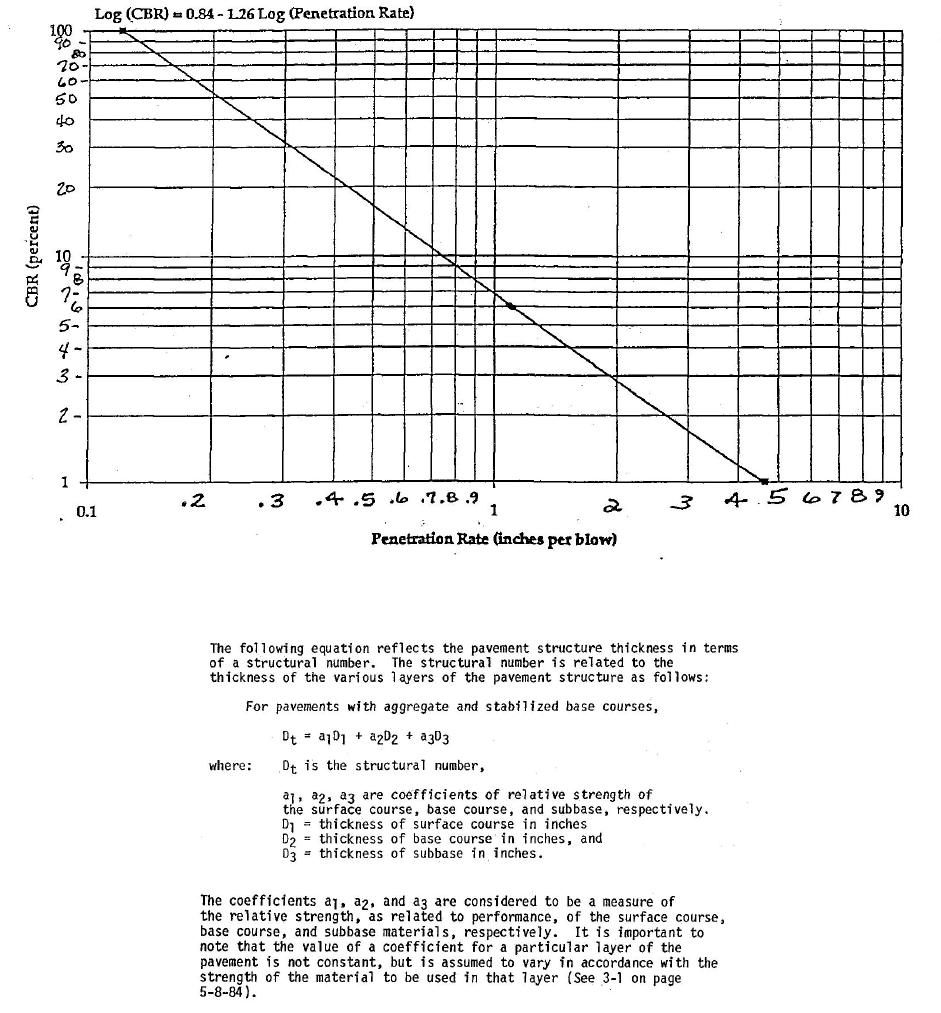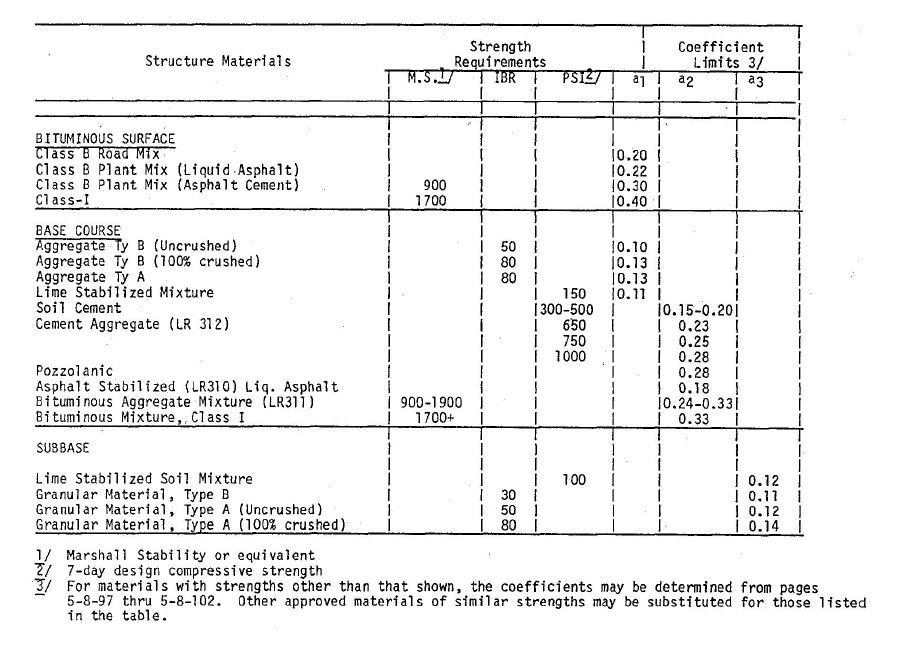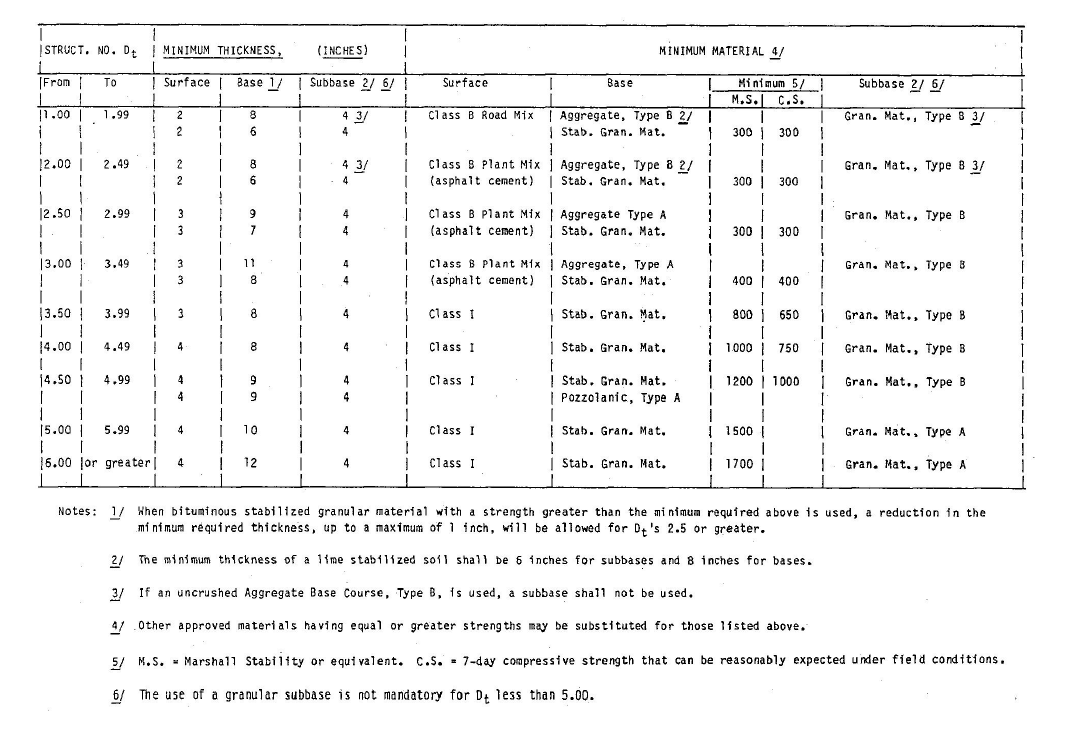Loading...
(A) All pavements shall be tested for compliance with the requirements of this chapter. Pavements will not be accepted that do not conform to all testing requirements.
(B) Before final review all pavements shall be cored of thickness by the subdivider in the presence of the Village Engineer or other representative of the village. Two cores shall be taken every 500 feet per lane unless deficiencies are encountered. When deficiencies are encountered, additional cores shall be taken as needed to document the extent of the deficiency. Requirements in the event of deficient pavements thickness shall be as follows:
(1) Four percent deficiency will be accepted only in isolated areas;
(2) Four percent to 8% deficiency will require the developer to file a five-year maintenance bond with the village in addition to other bonds required. The amount of the bond shall be 150% of the estimated cost of removing and replacing the defective pavement; and
(3) Eight percent and over deficiency will be removed and replaced to the thickness shown on the drawings.
(C) If portland cement concrete pavement test specimens do not attain the required strength as stated above, then pavement may be accepted if the in-place strength of the concrete meets a minimum strength of at least 3,700 psi, when cored and tested according to American Concrete Institute (ACI) standard methods.
(D) (1) If the in-place pavement strength, air content, or compaction of bituminous concrete is found to be deficient or other obvious defect is found to exist, subject to the review of the Village Engineer, the subdivider shall either:
(a) Remove and replace the deficient sections of pavement; or
(b) Post a five-year cash bond in the amount of 150% of the estimated cost to remove and replace the deficient pavement.
(2) If any significant pavement deterioration or defect appears in the subject pavement within the five- year bond period, the deteriorated or defective section shall be removed and replaced. If no deterioration or defects appear within the five-year period, the bond shall be released.
(E) (1) In the event that the subdivider fails to properly test and document subgrade compaction, air content, slump, and saw cut timing, subgrade compaction, or asphalt compaction, the subdivider shall either:
(a) Remove and replace the deficient pavement sections; or
(b) Post a five-year cash bond in the amount of 150% of the estimated cost to remove and replace the deficient pavement.
(2) If any defect, deficiencies, or other failures appear in the pavement within the five-year bond period, the deficient pavement shall be removed and replaced. If no failures appear within the five-year period, the bond shall be released.
(Ord. 97-7, passed 7-1-1997, § 5.14.10)
EXCAVATION AND BACKFILL FOR UNDERGROUND PIPING
(A) (1) For the purpose of this subchapter, UNDERGROUND PIPING shall be considered pressure pipe, drainpipe, plumbing pipe, storm sewers, wastewater sewers, or any other pipe conduit indicated on the drawings (including piping referred to in §§ 153.170 through 153.174, 153.185 through 153.190, and 153.205 through 153.216).
(2) (a) Whenever the term “pipe” or “pipeline” is used, it shall mean
UNDERGROUND PIPING. It is intended that piping be installed by constructing open trenches, unless specifically shown otherwise on the drawings.
(b) Piping shall not be installed by methods which do not allow the pipe to be bedded in granular material, such as installation with a trenching machine. Piping may be installed by the boring and jacking method, with or without casing piping, as required by the condition of the installation.
(B) Excavation and backfill for underground piping shall include all excavation, backfilling, compacting, disposal of surplus material, and all other work incidental to the construction of trenches, including any additional excavation which may be required for manholes or other structures forming a part of the pipeline.
(C) Along the route of the new piping, the surface materials shall be removed only to such widths as will permit a trench to be excavated which will afford sufficient room for proper efficiency and proper construction. Where sidewalks, driveways, pavements, and curb and gutter are encountered, care shall be taken to protect against fracture or disturbance beyond reasonable working limits. Topsoil suitable for final grading and landscaping shall be piled separately, in locations authorized by the Village Maintenance Superintendent or the developer’s engineer, and preserved so that it may be restored after the remainder of the backfill is so placed.
(D) The subdivider may conduct exploratory excavation to determine if an elevation conflict exists between a new pipeline and an existing utility. These exploratory excavations shall be performed far enough in advance of the work so, after consultation with the developer’s engineer, any necessary adjustments to the line and grade of the new pipeline can be made.
(E) The subdivider may make any exploratory excavation necessary to confirm the correct size, type, and number of fittings or valves required at a particular location.
(Ord. 97-7, passed 7-1-1997, § 5.16)
(A) Where working space will permit, trenches may be excavated by machine, provided that by so doing, public and private improvements will not be subjected to an unreasonable amount of damage.
(B) If, however, excavation by machine methods cannot be made without material damage being done to public and private improvements, hand excavation shall be employed.
(Ord. 97-7, passed 7-1-1997, § 5.16)
(A) The trench shall be excavated to an elevation four inches below the bottom of the pipe and so that the flow line of the finished pipeline will be at the depth and grade specified or established by the developer’s engineer. For trench depths of five feet or less and when sheeting and shoring is not required, the trench shall be excavated to a minimum width of two feet wider than the external diameter of the pipe, to permit thorough tamping of the material under the haunches and around the pipe. For trench depths of more than five feet and when sheeting or shoring is required, the trench width shall be a minimum of three feet wider than the external diameter of the pipe. The trench shall generally be excavated so that vertical faces are maintained, except that when authorized by the developer’s engineer and when physical conditions and safety will permit, the sides of the trench may be sloped or benched in accordance with OSHA’s 29 C.F.R. part 1926, subpart P, Excavation Standards.
(B) If these trench widths are exceeded without the written authorization of the developer’s engineer, the pipe shall be installed with a concrete cradle or with concrete encasement or a stronger pipe than originally specified shall be used as authorized by the developer’s engineer.
(Ord. 97-7, passed 7-1-1997, § 5.16)
Loading...


